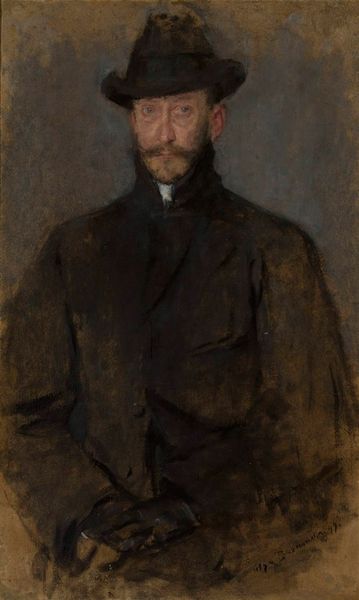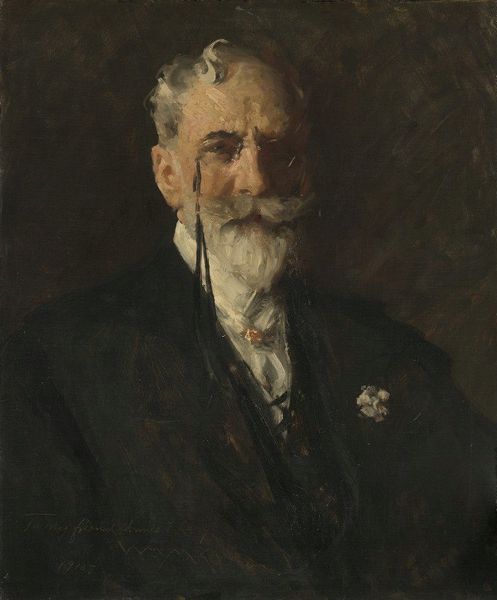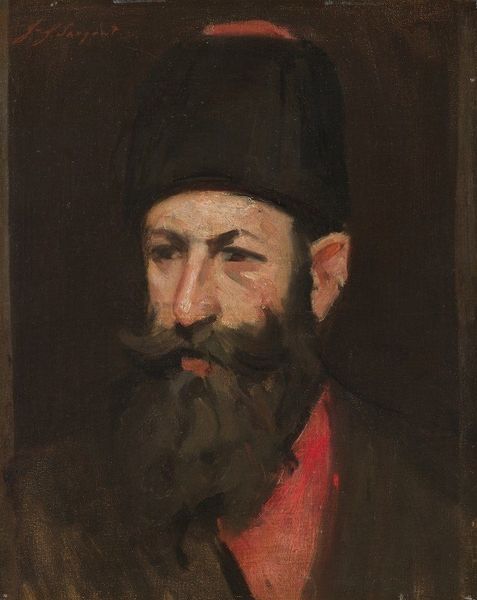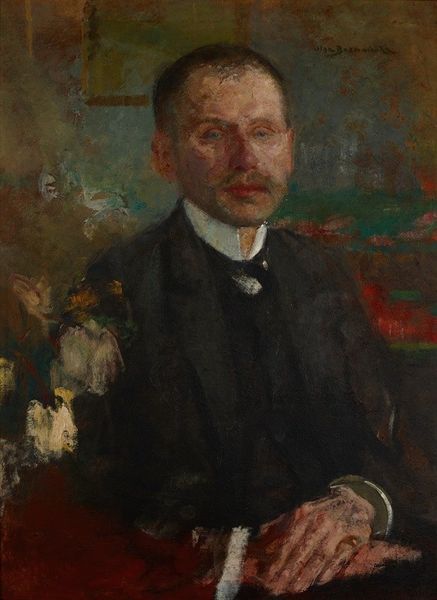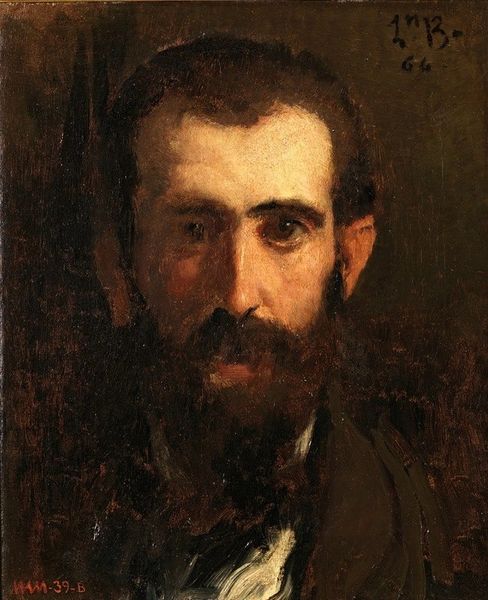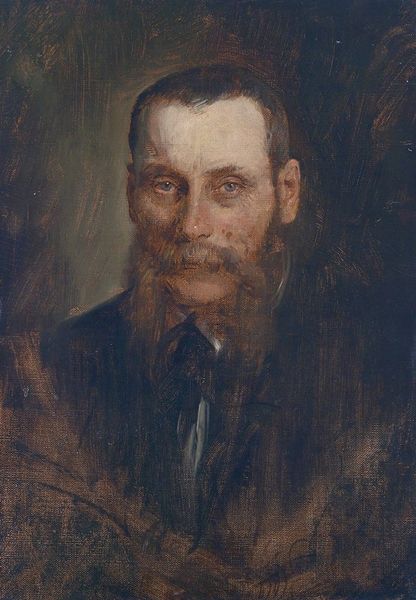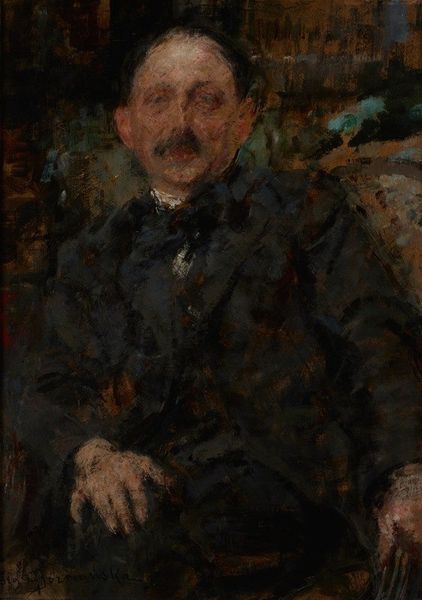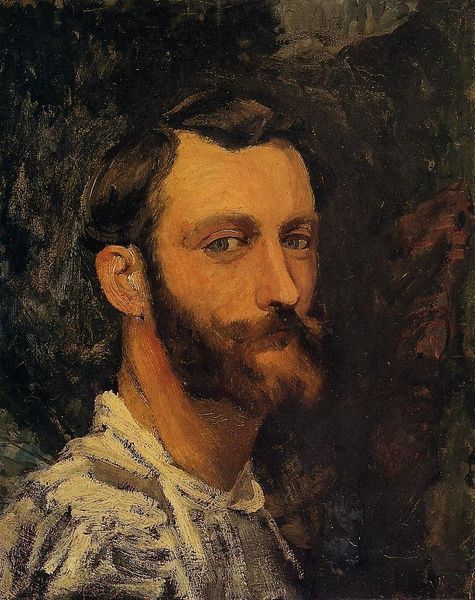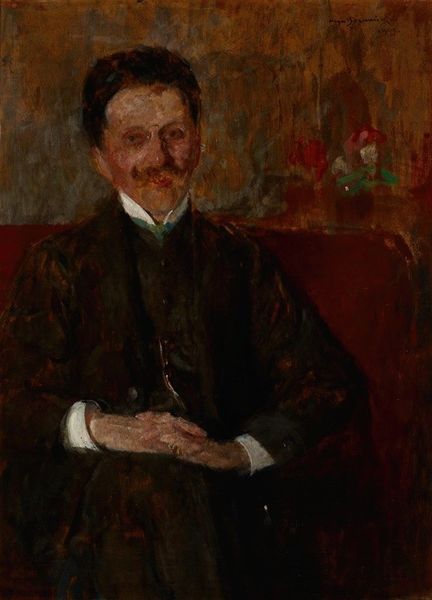
painting, oil-paint
#
portrait
#
figurative
#
painting
#
oil-paint
#
oil painting
#
academic-art
#
modernism
#
realism
Copyright: Public Domain: Artvee
Curator: Here we have Thomas Eakins' oil painting, "Edward Burd Grubb, Jr.," from approximately 1898. Editor: The impasto is immediately striking. Look at the texture; you can almost feel the movement of the brushstrokes across the canvas, building up the form of the coat. It seems both carefully crafted and yet almost spontaneously executed. Curator: Absolutely. Eakins' portraits are fascinating because they reveal so much about the sitter’s social standing. Grubb came from a long line of industrialists in the Philadelphia area, owning iron and steel mills, playing a huge part in the political landscape. He was a complex man, this painting an effort by Eakins to acknowledge his prominent position. Editor: So this is very much a product of industry—the painting, and the person portrayed? You see, for me, the interesting tension is in how Eakins translates the sitter’s status into paint. The quick strokes give it a rawness. I wonder, does it democratize portraiture by making the mark of the artist, the labour of the painting itself, so visible? Curator: Eakins was definitely interested in realism, which was somewhat radical for his time. Consider the power dynamics: The wealthy commission art to reinforce their position and their aesthetic preferences and an artist’s inclination may be at odds. Eakins, dismissed from the Pennsylvania Academy of the Fine Arts not long before, sought independence from conventional constraints, making choices on how he portrayed this powerful individual. Editor: He's capturing the effects of labour. Observe the muted colors—very earthly, solid. And compare them with the stark, almost brutal, highlighting. I can't help but think of the material process itself as mirroring Grubb’s work as an ironmaster. There's something almost metallic in how the paint is handled. Curator: It does connect to those industries through this particular mode of depiction. I see an assertion of modern ideals. While a society portrait in many ways, it eschews classical idealization in favor of a study of a man, impacted by—and in control of—the forces around him. Editor: In seeing that tension, I suppose both man and artwork seem, in a way, products of process and context, of pressures to make and perform, something brought to life through Eakins’ meticulous yet passionate engagement with his materials. Curator: Precisely. Art reflects not only the individual but also the world that shapes him and, in turn, that he shapes.
Comments
No comments
Be the first to comment and join the conversation on the ultimate creative platform.
